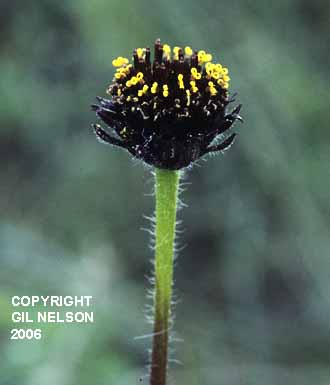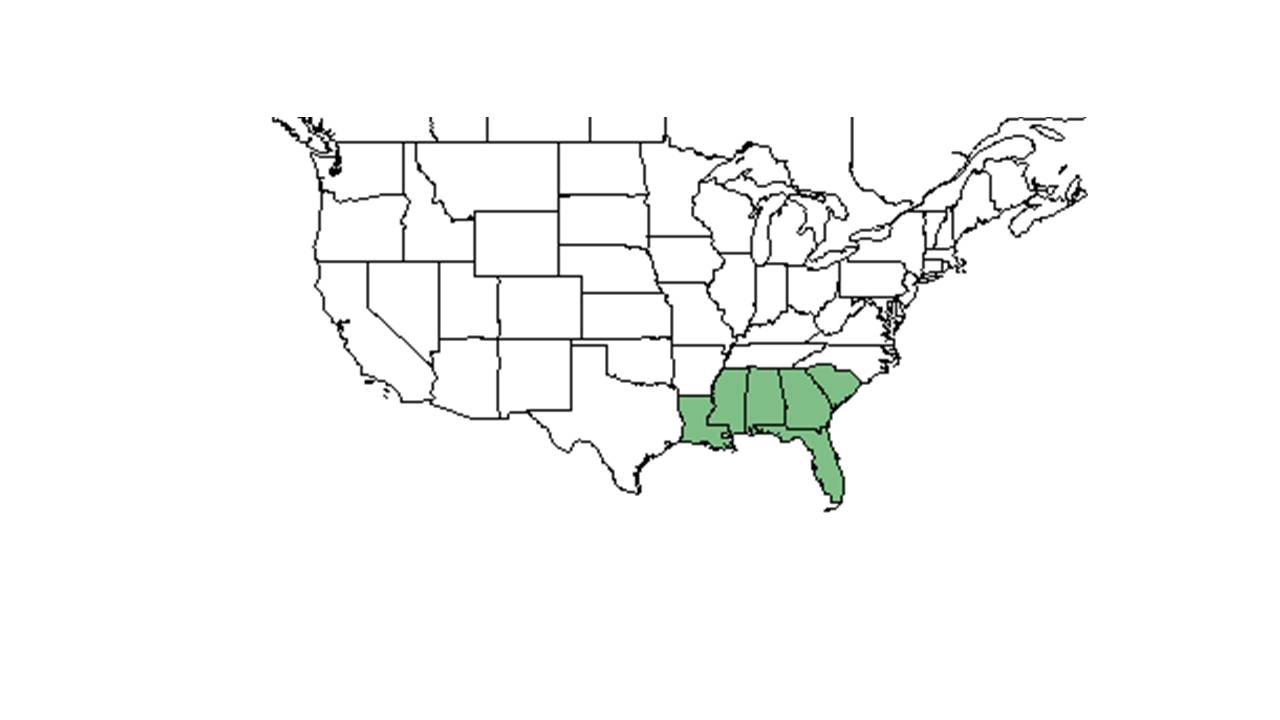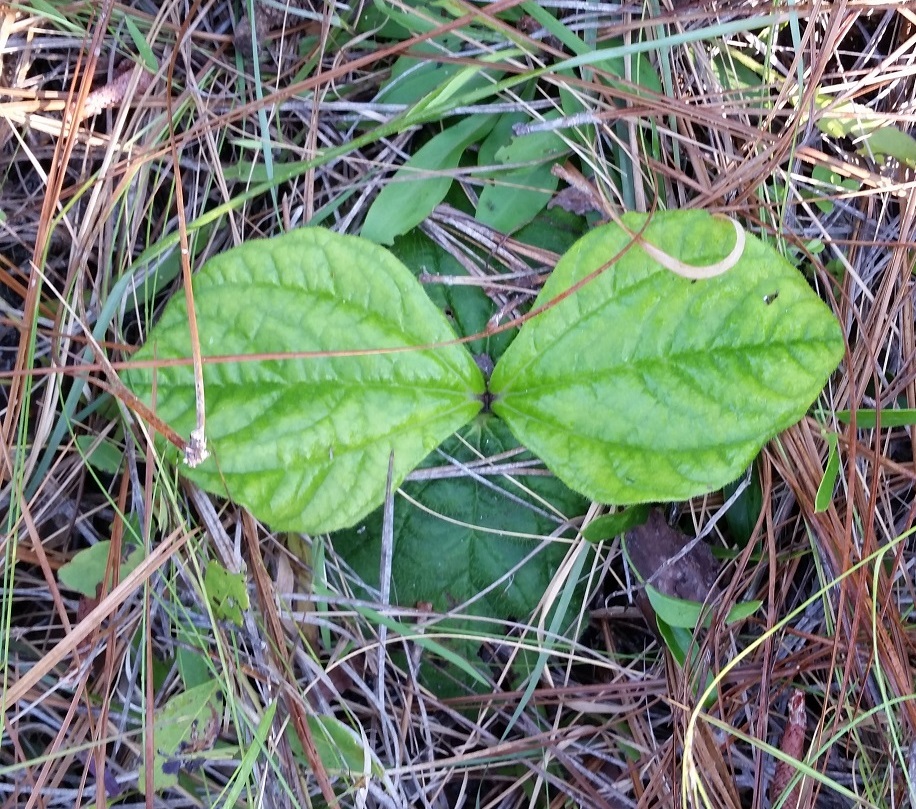Helianthus radula
| Helianthus radula | |
|---|---|

| |
| Photo was taken by Gil Nelson | |
| Scientific classification | |
| Kingdom: | Plantae |
| Division: | Magnoliophyta - Flowering plants |
| Class: | Magnoliopsida – Dicotyledons |
| Order: | Asterales |
| Family: | Asteraceae ⁄ Compositae |
| Genus: | Helianthus |
| Species: | H. radula |
| Binomial name | |
| Helianthus radula (Pursh) Torr. & A. Gray | |

| |
| Natural range of Helianthus radula from USDA NRCS Plants Database. | |
Common names: Rayless sunflower; Stiff sunflower; Roundleaf sunflower
Contents
Taxonomic notes
Description
A description of Helianthus radula is provided in The Flora of North America.
Helianthus radula is a perennial herbaceous species.
Distribution
Ecology
Habitat
H. radula can live in loblolly or slash pine communities,[1] upland longleaf pine communities, [2][3] pine-oak sandhill woodlands, near the edges of bogs, limestone glades, and mixed oak-cabbage palm hammocks.[4] Additionally, it occurs in disturbed areas such as roadsides, old fields, power line corridors, by trails, and in lawn and waste areas. This species seems to prefer semi-shaded areas, and occurs on mostly wet to dry sandy soils, or over limestone. Associated species include Pinus palutris, Quercus laevis, Serenoa repens, Sabatia brevifolia, Kalmia hirsuta, Balduina uniflora, Polygala lutea, Sorghastrum secundum, Quercus pumila, Seymeria cassioides, Liatris graminifolia, Helianthus heterophyllus, Cirsium, Bigelowia, Ludwigia, Pinus elliottii, Pityopsis, Baptisia simplicifolia, Ilex glabra, Andropogon, Rynchospora, Phoebanthus tenuifolia, Eupatorium album, Pityopsis, Rhexia alifanus, Liatris gracilis, Carphephorus odoratissimus, Baptisia simplicifolia, Ctenium aromaticum, Vaccinium darrowi, Quercus pumila, Quercus minima, Gaylussacia dumosa, and Physostegia godfreyi.[4]
Phenology
Flowering and fruiting has been observed in August through November.[4]
Seed dispersal
According to Kay Kirkman, a plant ecologist, this species disperses by gravity. [5]
Fire ecology
This species has been found in habitat that is burned frequently,[4] even biennially.[3]
Conservation and management
Cultivation and restoration
Photo Gallery
References and notes
- ↑ Yager, L. Y., M. G. Hinderliter, et al. (2007). "Gopher tortoise response to habitat management by prescribed burning." The Journal of Wildlife Management 71: 428-434.
- ↑ Kirkman, L. K., M. B. Drew, et al. (1998). "Effects of experimental fire regimes on the population dynamics of Schwalbea americana L." Plant Ecology 137: 115-137.
- ↑ 3.0 3.1 Gilliam, F. S., W. J. Platt, et al. (2006). "Natural disturbances and the physiognomy of pine savannas: A phenomenological model." Applied Vegetation Science 9: 83-96.
- ↑ 4.0 4.1 4.2 4.3 Florida State University Robert K. Godfrey Herbarium database. URL: http://herbarium.bio.fsu.edu. Last accessed: June 2014. Collectors: Loran C. Anderson, Roomie Wilson, Delzie Demaree, C. Ritchie Bell, F. H. Sargent, Samuel B. Jones, John W. Thieret, Almut G. Jones, A. F. Clewell, R. K. Godfrey, Bruce Hansen, JoAnn Hansen, Robert L. Lazor, R. Kral, J. P. Gillespie, R. E. Perdue, Jr., Paul L. Redfearn, Jr., Kurt E. Blum, D. B. Ward, S. S. Ward, John B. Nelson, G. R. Knight, Cecil R Slaughter, Nancy E. Jordan, R. A. Norris, and R. Komarek. States and Counties: Florida: Bay, Calhoun, Citrus, Flagler, Franklin, Gadsden, Holmes, Jefferson, Lake, Leon, Levy, Liberty, Madison, Nassau, Okaloosa, Orange, Osceola, Putnam, St Johns, Taylor, Wakulla, and Walton. Georgia: Thomas. Louisiana: Tangipahoa and Washington. Mississippi: Jackson, Lamar, and Pearl River. South Carolina: Colleton.
- ↑ Kay Kirkman, unpublished data, 2015.
